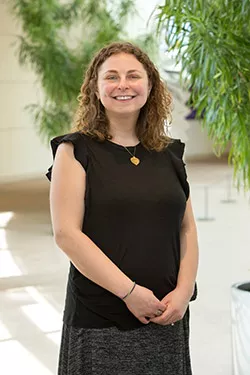Neuroscientist Tedi Asher '05 Shapes How People View Art

Artsy: This Museum Hired a Neuroscientist to Change the Way We Look at Art
From the late 16th to the early 20th century, the salon-style hang was the predominant display convention across Europe. But hanging paintings like this—crammed cheek to jowl in a gallery space—has since fallen out of favor, in part because it tends to prevent viewers from concentrating on a single work.
But why, exactly? The reason may have something to do with the circuitry of the human brain—which is why at least one museum is branching out and recruiting a neuroscientist to join its team.
“On a behavioral level, it can be distracting to walk into a room and have tons of things to look at,” said Dr. Tedi Asher ['05], who earlier this year joined the Peabody Essex Museum, in Salem, Massachusetts, for a one-year appointment as Neuroscience Researcher. “At the level of neurological activation, each painting will be presented less strongly.”
…
Over the next year, she’ll meet regularly with an advisory panel of neuroscientists, and will ultimately produce a publication that crystallizes her findings.
“Anecdotally, we’re all familiar with the idea that a satisfying experience has this delicate balance of meeting and violating our expectations,” Asher said. “In the context of exhibition design, how can we surprise people in a way that won’t be jarring but will help viewers make sense of what they have seen? Something that is unexpected takes longer to detect—but it also makes a more lasting imprint.”
At the Peabody Essex, Asher will apply the principles of neuroaesthetics—the synthesis of neuroscience and aesthetics—to a reinstallation of the museum’s permanent collection that will unfold over the next five years. Since arriving at the museum, she has been an advocate for the gallery-goer’s brain, making the case for display conventions that sidestep outmoded curatorial strategies (overloaded walls, indigestible wall text).
One idea that she is developing are rest areas, or “palate cleansers,” that will allow visitors a respite from sensory stimulation, much like the intermission in a play.
…
Asher arrived at the Peabody Essex Museum almost by happenstance, dashing off a cover letter to the museum when an advertisement for the position was circulated on an internal listserv. Raised in Washington, D.C., she remembers “falling over” after seeing Claude Monet’s haystacks at the Art Institute of Chicago but ultimately dedicated herself to the sciences, receiving a bachelor’s degree in biology from Swarthmore College and later a Ph.D. from Harvard Medical School’s Biological and Biomedical Sciences program, where she investigated the linkage between aggression in male mice and serotonin-producing neurons. Her role at the Peabody Essex Museum is that of a benign disruptor, evaluating the format of forthcoming exhibitions in the context of neural pathways. “People seem to appreciate that I’m a little bit of an outsider,” she said.
Asher was a biology major and history minor at Swarthmore, as well as a member of the women's basketball team and the Writing Associate Program. Her hire was also featured in Newsweek and the Boston Globe.



